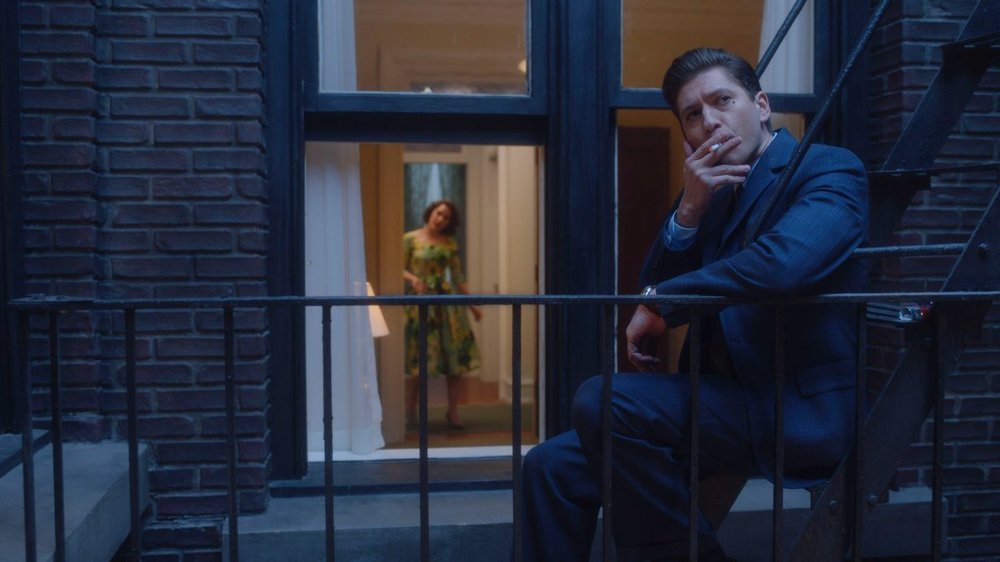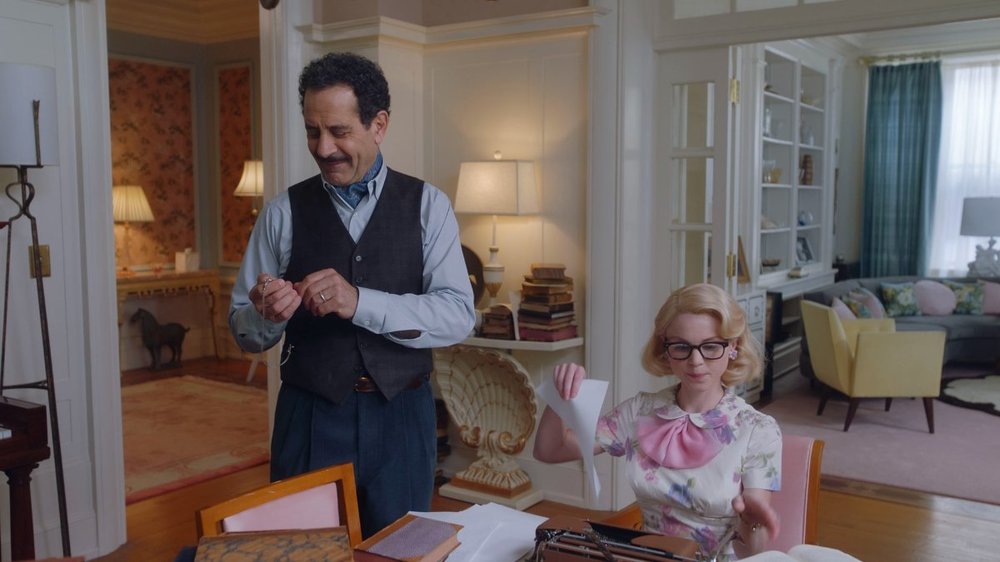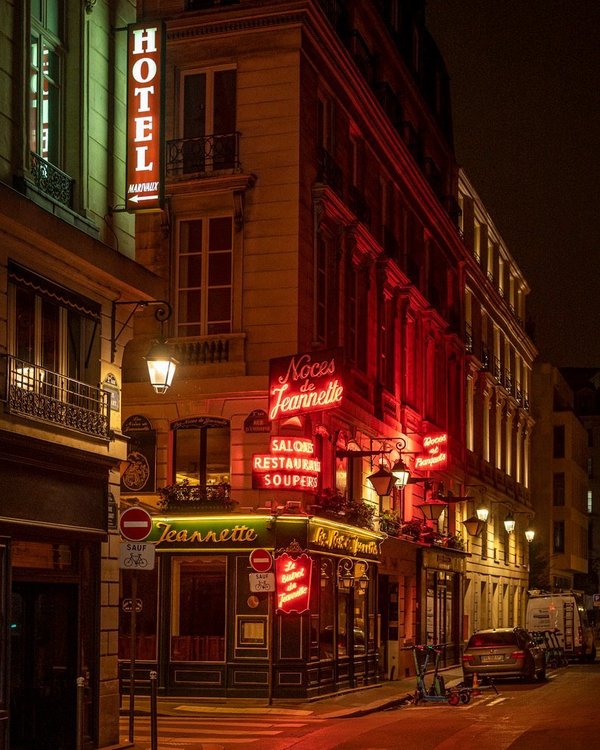-
Posts
22,408 -
Joined
-
Last visited
Everything posted by David Mullen ASC
-
I don't know anyone that would go as low as 700K, that would really be pushing the blue channel! "Full blue" (Full CTB color) would be to shoot in 5600K light at 3200K on the camera. Your two scenarios are quite far apart in the amount of blue color because you aren't calculating the MIRED shift values. Using 5600K light on a camera setting of 3200K, which is the equivalent of putting Full CTB gel on a tungsten lamp, is a MIRED shift of -134. Gelling a light to 7000K for 5600K setting on the camera is only a MIRED shift value of -36, which is hardly any increase in blue, it's like gelling a 3200K light to 3600K when the camera is set to 3200K. You'd have to gel a light to 22,000K to get a 5600K camera setting to look as blue as a 5600K light looks on a camera set to 3200K. However, again, it's the same gel, Full CTB, so yes, you could put a Full CTB gel on a 5600K light, set the camera to 5600K, and get the same blue color as a 5600K light on a camera set to 3200K. If this is the only light in the scene so no mixed sources, then in theory the blue channel would be cleaner when the camera is set to 5600K instead of being set to 3200K. This is because the "native" color sensitivity of most sensors is close to daylight-balance. However, if your camera is fairly clean at 3200K, then it's not much of an issue. Also depends on what base ISO you want to work at.
-

Shooting morning Blue Hour in the Evening
David Mullen ASC replied to Manuel Troendle's topic in General Discussion
No one would be able to see a difference. The colors of blue hour depend a lot of weather as well anyway. In some places mornings are mistier whereas in other places, evenings are more overcast, so it just depends if you are intercutting scenes shot in different dusk/dawn situations. The blueness depends on how clear the sky is, clear blue skylight at twilight is more blue than if it's semi-overcast. So you may have to color-correct to match, but that even is true if you shoot in a single period because the color of the light keeps changing minute by minute.- 1 reply
-
- 1
-

-
I shot this comedy special a year ago exactly, it got released in April on Amazon Prime. I used the crew from "The Marvelous Mrs. Maisel". We had two nights of performance to shoot, to be edited into one performance. I think we had five cameras, all with zooms. I really wanted to make sure everything wasn't shot on a long lens from the back of the house -- especially with haze in the air -- so basically on the first night the cameras were farther back and then all were moved closer the second night. Night One: Camera #1 was center of house in the back on a 30' Technocrane to get the widest shots with camera moves. Camera #2 was also dead center, under Camera #1, on a longer lens. The reason I needed two dead-center cameras was because she was flanked equally by two musical performers so if the camera was even slightly off-center, she blocked one of the two people and it looked better as a frontal 3-shot. Camera #3 was in the corner of house left, near the back of her parents in the audience, who she talks to. Camera #4 was in the corner of house right but a bit more downstage to get near profile shots and be able to pan over to the parents in profile. Since the theater had a balcony section, Camera #5 was upstairs shooting high and wide over the heads of the audience in the balcony. Now if we didn't have a two-level theater, I probably would have dropped that position though the high angle was nice. Night Two: I wanted a frontal camera that was much closer physically -- close and wider-angle -- but since I didn't want to block the view of too many people, or have her view blocked too much, I put the camera on a remote head on a dolly riser so that it wasn't as "present". The camera was right at the end of the stage "tongue" or "thrust" that jutted out. Then I worked the other cameras around the perimeter; I think I brought the upstairs camera downstairs so I could put one camera each on her two musical performers who interact with her. And one camera was more dedicated to audience reactions. After the performance was over, we asked the audience to stick around and she re-performed some sections again but with a Steadicam roving behind her back to see the whole house and spotlight. I think I put some of the other cameras on more audience reactions. Camera #1 both nights had a shorter 5:1 zoom and the rest had 11:1 zooms. The Steadicam had a Primo prime lens. I used a #1/8 Black Frost on the lenses for minimal diffusion. ARRI Alexa Mini's shooting 3.2K ProRes 4444 Log-C 16x9, which is how most of "The Marvelous Mrs. Maisel" was shot.
-

Has anyone used the Sony Venice for 1.43:1 IMAX exhibition?
David Mullen ASC replied to Edith blazek's topic in Sony
I don't know about 1.43 : 1, but "Top Gun: Maverick" made a 1.90 : 1 4K Digital IMAX version that went from 2.39 to 1.90 for some sequences. Now that IMAX Laser can do 1.43 : 1, "Dune: Part 1" was released in Digital IMAX and some theaters used 1.43 : 1 for select sequences, but those shots were on the ARRI Alexa LF in Open Gate (which is also around 1.5 : 1.) -
This is probably the best way but quite expensive: https://dsclabs.com/product/xyla-21/ But some of what makes these cameras different from each other isn't the range but how things look as they reach the clip point, does the image burn-out in a natural-looking way (i.e. ARRI) or does it look odd (not naming names.) So you could shoot a face and a grey scale / color chart and do a simple under-normal-over test in 1-stop increments, or whatever increments you want. Technically the ISO setting affects the clip point but once you see the overall range you can decide whether you should shift the ISO.
-

Public Enemies Post-Production
David Mullen ASC replied to Norman Luce's topic in General Discussion
As I recall, this was in the days when there was a DIT on set color-correcting and recording a Rec.709 signal. Mann had not embraced log recording yet, he wanted to bake-in the color-correction. The main issue with this is that on set you don't have the ability to use Power Windows so you can't isolate, for example, a bright lamp or sky and bring them down separately before converting to Rec.709. You're also baking in the amount of sharpening based on viewing a set monitor than by watching the image on a large D.I. theater screen. You're also color-correcting shots as you are shooting them rather than based on an edited sequence in context with other sequences. Of course in the end there was still a final color-correction session but since the footage had already been corrected once, there was less to do. Though some people did not like the video look of "Public Enemies" I felt that Mann was at least using HD cameras to create a new aesthetic rather than simply try and hide the fact that he was shooting digital. -
Not sure the point of Vision 4 considering most people don’t want the 35mm stocks to get cleaner, sharper, and finer-grained anymore — maybe for Super-16 and Super-8 though. Unless they are considering a new 35mm 800T or 1000T, that might sell.
-

Hard light from the window - day interior
David Mullen ASC replied to Nathaly Pinheiro's topic in Lighting for Film & Video
Just depends, you can raise the light to get a hard cut from the window or you can use a black flag or you can use a heavy diffusion frame to create a hard cut with some soft light as well. Sometimes I gel either the diffusion frame to be cooler or I clip warming gel to hang below the frame and make the hard light warmer. -
The color filter in the Genesis/ F35 is not a mosaic pattern that is 50% green / 25% red / 25% blue, it’s a series of repeated vertical red, green, and blue stripes filtering the light hitting the photo sites. There are 2K red, 2K green, 2K blue, 6K total photo sites. So there is no interpolation / upscaling of red and blue compared to green needed since the recording is 2K RGB (I’m calling 1.9K HD “2K” to simplify.) In a 4K sensor with a Bayer CFA, you have 2K green, 1K red, 1K blue from which you might want to create 4K RGB, so information in each color channel requires some interpolation/ upscaling. I’m not being completely accurate here though but you get the idea.
-

4500 Kelvin Interiors
David Mullen ASC replied to Jae Christsensen's topic in Lighting for Film & Video
-

4500 Kelvin Interiors
David Mullen ASC replied to Jae Christsensen's topic in Lighting for Film & Video
Whether 4500K looks cool, warm, or neutral depends on the color temperature of the light in the room. There are plenty of movies that go for a cool daytime look -- I've been rewatching movies shot by Janusz Kaminski and noticed he often likes cool day interiors. -
Steadiness will affect sharpness. The other issue is that if the viewfinder is very poor, then there is a greater chance of missing the focus.
-

Which artist do you mostly refer to???
David Mullen ASC replied to Abdul Rahman Jamous's topic in General Discussion
Which visual artists you reference, whether painters, still photographers, etc., depends on the project. Yes, I have some favorites like Rembrandt, Sargent, Vermeer, Munch, Van Gogh, Hopper -- all of whom are common references for DP's. -
"Raiders" was actually shot at different stops -- Slocombe liked to stop down for deep focus but because he was using 100 ASA film, that was easier in sunlight where he would be shooting at f/11-f/16, but that wasn't possible for all interiors and night scenes. The few scenes like in the U-boat underground pen or the wharf at night look more like f/2.8-f/4. He tried to get to an f/14.5 he said in an interview in American Cinematographer (May 1982): Shooting a whole movie at one stop is more the exception than the rule, unless it is a movie entirely shot on interiors. A more typical movie with a mix will have some scenes shot near wide-open in low-light or stopped down for slow zooms or when they need a deeper focus. You look at a movie like "Star Trek: The Motion Picture" and the bridge scenes had to be shot at f/2.8 in anamorphic due to the dimness of the console lights and screens, but a few shots were done on a T/4.5 zoom and some others were shot on VistaVision looking at a bluescreen in the big screen on the bridge and clearly look shot at a deeper stop. In those cases, the console lights and monitors look dimmer than established. Once the camera was off of the bridge set, there were sets that could be shot at f/4. Yes, it's not bad advise to try to stick to a closer range for visual consistency and certainly most DP's try to light coverage for a single scene with the same stop. You hear advice in old American Cinematographer magazines, for example, where DP's say that they always light to an f/4 because they ever no when the director is going to ask for the zoom lens to be used. If you decide to shoot a whole movie at f/2.0, you're basically telling the director they can't use a zoom lens.
-
Well, if your preferred stop is near wide-open like f/2.8 then it just means using ND filters in brighter conditions. Frederick Elmes did something similar on his movies, keeping to the same f-stop. Deakins says he often uses a deeper stop outdoors in daylight because he thinks that feels more like how you experience that environment, with a bit more depth of field.
-

Which material for diffusion?
David Mullen ASC replied to Tiago Pimentel's topic in Lighting for Film & Video
Yes, if there's a hot spot then the second diffusion will help make it spread more evenly. -

Which material for diffusion?
David Mullen ASC replied to Tiago Pimentel's topic in Lighting for Film & Video
The softness of a light is controlled by the size of the source relative to the subject. So IF a light evenly fills a 6x6 diffusion frame, for example, it will not get any softer by doubling it up, only by going larger. The reason we use heavier diffusion or double-up lighter diffusion is to help the light behind it to spread more evenly to fill the frame. So making a diffusion twice as heavy, for example, does not make the light necessarily twice as soft, not if, for example, it had already filled most of the frame evenly with the first layer. -

Which material for diffusion?
David Mullen ASC replied to Tiago Pimentel's topic in Lighting for Film & Video
Technically Light Grid is the same as Half Grid, so two would make a Full Grid, but it's not an exact science. I would think two 250s would be slightly denser than a single 216 but you'd have to test to know for sure. -

Planet Terror by Rodriguez
David Mullen ASC replied to Patrick Cooper's topic in On Screen / Reviews & Observations
I believe Rodriguez used the Panavision Genesis camera for his section of the film. -

Mole Richardson lights
David Mullen ASC replied to Justin Oakley's topic in Lighting for Film & Video
That's why they are more common on soundstages rather than in equipment vans... but there's nothing quite like a good tungsten fresnel for certain lighting techniques. -

Mole Richardson lights
David Mullen ASC replied to Justin Oakley's topic in Lighting for Film & Video
Those look like "stage" babies (1K) and juniors (2K) instead of the slightly smaller "baby" versions (baby-baby 1K and baby-junior 2K). They were made for decades so I don't know how old they are but as long as they work and aren't decaying or falling apart, they are still useful -- and are still commonplace on soundstages. -

Do some of Red's OLPFs use some kind of diffusion?
David Mullen ASC replied to Sean Spain's topic in General Discussion
No, Red does not put diffusion in their OLPF but an OLPF is designed to blur high frequency detail so that it doesn’t alias — so in a way that’s a type of diffusion in that a heavier OLPF will make the image feel less “crispy”. But you also have to know if you are comparing similar amounts of electronic sharpening added post raw conversion when looking at two cameras. -
The vfx supervisor should deliver the finished composite with the alpha channels available so that the colorist has access to each layer.
- 4 replies
-
- greenscreen
- colorgrading
-
(and 1 more)
Tagged with:







